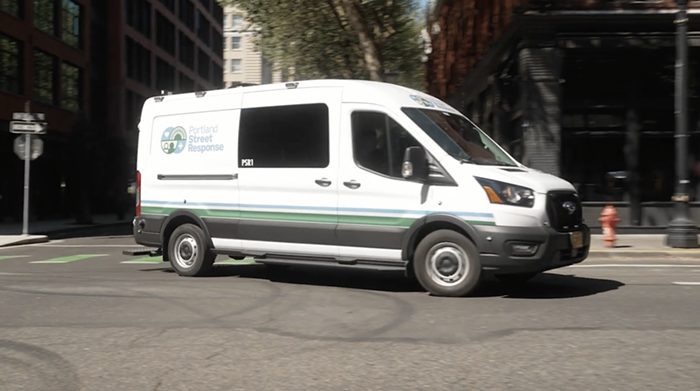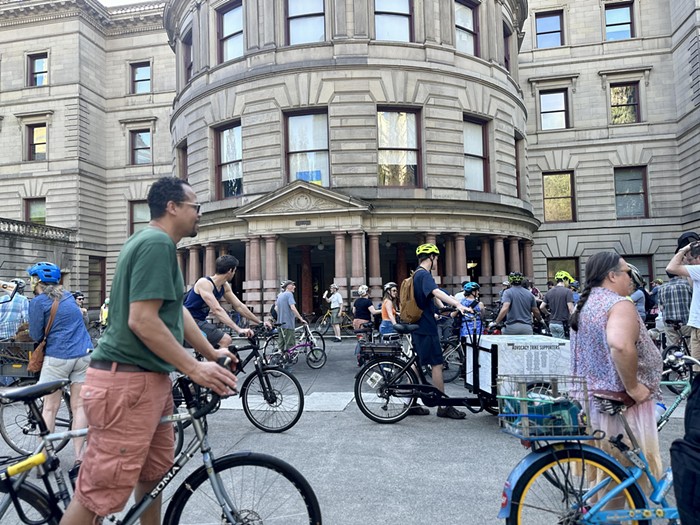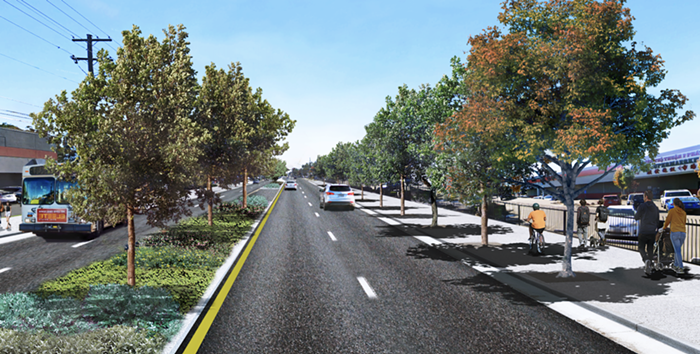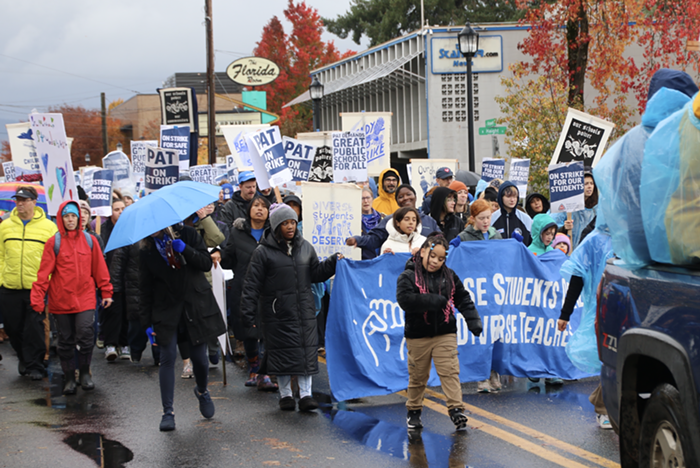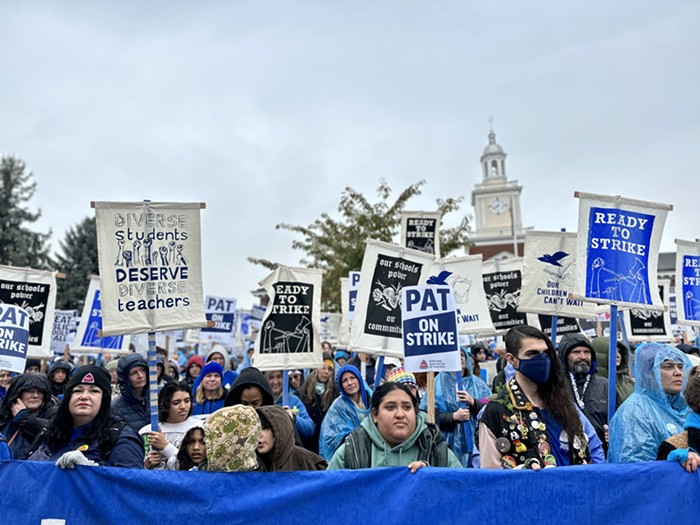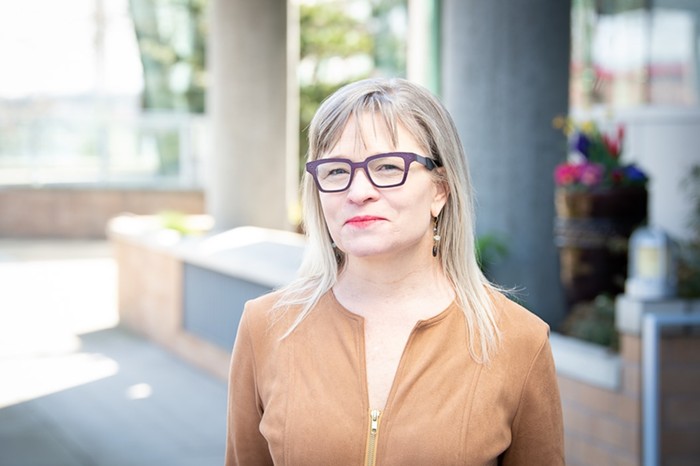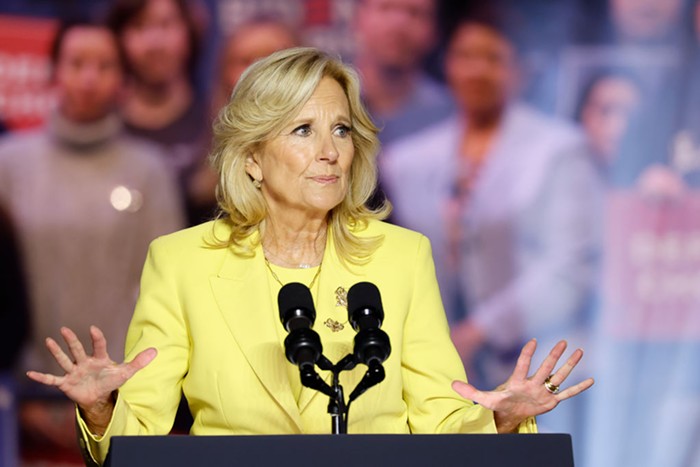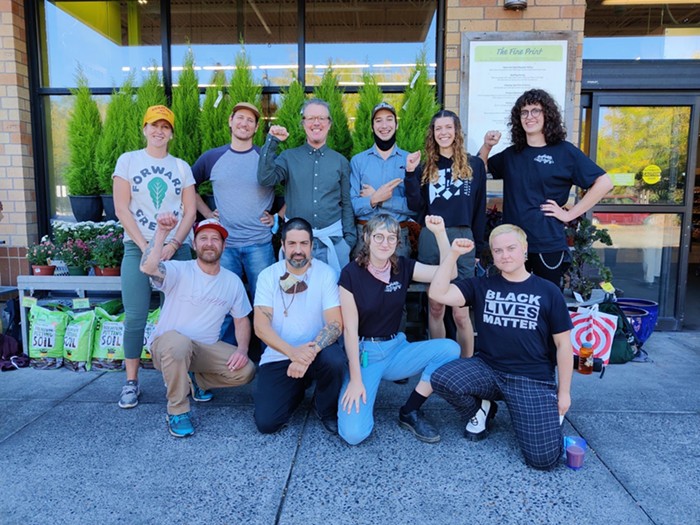
Update 12 pm:
During a press conference announcing the reinstatement of the statewide indoor mask mandate, Governor Brown stressed that the purpose of the mask requirement is to avoid exceeding statewide hospital capacity and keeping COVID-19 cases low enough to allow students to attend school full time in-person this fall.
Modeling from the Oregon Health Authority (OHA) shows that, without any safety intervention, Oregon is poised to exceed its hospital bed capacity by 500 beds this September. Intensive Care Unit beds across the state are currently 90 percent full.
If 80 percent of Oregonians follow the mask mandate, OHA predicts the demand of hospital beds will reduce by half. That means Oregon would still need 250 additional hospital beds to serve COVID patients this fall.
The mandate is not being enforced with fines and state health authorities are relying on Oregonians’ to follow the mandate themselves.
When asked if she regretted lifting statewide mask and distancing requirements in June, Brown said the state did not reopen too soon and that the “Delta variant changed everything.” The Delta variant was present in Oregon—and known to be more transmissible—when Brown lifted the state’s COVID safety requirements.
Original story:
Masks will be required indoors for all Oregonians 5 years and older starting Friday, August 13.
Governor Kate Brown announced the mask mandate Wednesday as an approach to curbing the spike in COVID-19 cases across the state due to the highly-contagious Delta variant. The announcement came one day after the Oregon Health Authority (OHA) recorded 2,329 new COVID cases—the highest number of daily new cases recorded in Oregon since the pandemic began.
The mask requirement follows the same rules that Multnomah County officials announced Monday: anyone 5 and older must wear a mask indoors regardless of vaccination status, except for in “common sense” situations, like while eating, swimming, or speaking in public. In those outlined situations, the OHA recommends people be fully vaccinated if possible.
Unlike Multnomah County’s mandate, the state will not issue fines or conduct inspections to enforce masking requirements. Instead, the Occupational Safety and Health Administration (OSHA) will focus on educating and partnering with businesses to implement the masking protocols. It’s unclear if fines will be introduced later. Brown’s office did not clarify how long the mask mandate is expected to be in place.
Brown is hosting a press conference at 11 am on Wednesday to announce the mask mandate. You can watch it live the recording here:
It’s been just over a month since Brown declared a win against the pandemic during a “reopening Oregon'' event, citing Oregon’s low case and mortality rate throughout the pandemic. Two days after that June 30 event, the state achieved its goal of partially vaccinating 70 percent of adult Oregonians—a benchmark that had previously been set for Oregon to achieve herd immunity, or enough people immunized that the spread of the virus was effectively stopped—so Brown lifted almost all masking, distancing, and capacity limit requirements.
But, experts have determined herd immunity to be an ineffective measurement due to the strength of coronavirus variants. Put simply, the more contagious the virus, the higher percentage of the population needs to achieve immunity in order to slow the spread. With every new strain, achieving herd immunity has drifted farther out of reach.
Oregon had about two weeks of faux-triumph over the pandemic until the Delta variant began to spread throughout the state. On July 1, Oregon had an average daily case rate of 173. By July 14, that number had climbed to 239, and by the end of the month Oregon was averaging over 800 new cases per day.
When Brown lifted the safety restrictions at the end of June, the state also transitioned from a top-down crisis approach to the pandemic where state leaders dictated the public health response, to a more typical regional public health response that allows counties to determine health and safety measures. During a late-July vaccine event, Multnomah County Health Officer Jennifer Vines said the county was determining the new threshold for reinstating a mask mandate.
“We’re wrestling with that right now,” Vines said at the time. “You’ve got to do your prevention before you see serious signs of a problem, otherwise you’ve missed your window. At the same time, there is so much COVID fatigue that there really are questions about what is the role of government at this point.”
Multnomah County issued a mask mandate Monday, when the state’s average daily cases reached 1,300.
An OHA spokesperson told the Mercury in July that the state would consider intervening and reinstating safety requirements if COVID cases started to strain statewide hospital capacity. As of August 9, 635 Oregonians are hospitalized with COVID—the highest number of hospitalizations recorded in the state during the pandemic—prompting the state to intervene.

